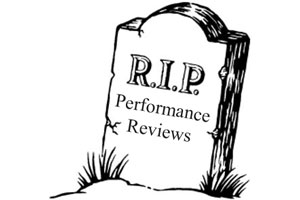 Performance reviews are essential to increase employee engagement and staff performance, but they do need to be structured in a way that fosters engagement. How can an organisation achieve that?
Performance reviews are essential to increase employee engagement and staff performance, but they do need to be structured in a way that fosters engagement. How can an organisation achieve that?
Performance reviews can be a high stress situation for employees as sometimes pay, promotions and benefits can rely on the outcome. In high-stress situations we are rarely at our best and we may close down our conversational capabilities and be hesitant about speaking up if we don’t agree with feedback from a manager.
Annual performance reviews under these conditions are not sufficient to ensure true personal growth of an employee. Clear communication is needed from both parties in order for a review to be a catalyst for change in an employee’s behaviour.
The two most common mistakes made when conducting a performance review are:
- Managerial attitude – The mistake managers often make is to see performance reviews purely as a process or a ‘tick the box’ exercise. To make performance reviews effective and valued, managers need to invest time in developing a relationship with the employee that is built on trust. To do this, managers need to be able to conduct effective workplace conversations by listening with interest and engaging in regular dialogue with staff. Managers need to wholeheartedly believe in both the relationship with the employee and the performance review outcomes in order for them to be effective.
- Regularity – Annual performance reviews as a stand-alone method are not enough. Managers should provide feedback as often as is required, highlighting areas for improvement as development opportunities. It can be a quick two minute conversation to let an employee know they are doing a good job, or a scheduled meeting to discuss how an employee could do a task more efficiently the next time around. A once a year conversation is not enough to engage employees and make them feel valued.
Now that you know what’s wrong with performance reviews, what are some habits and tools to use to increase effectiveness?
Enhance conversation skills
There are a number of tips to keep in mind to increase conversation skills, such as:
- Set clear expectations
- Ensure there is agreement on those expectations
- Seek clarification as necessary
- Don’t avoid conflict, as it may then become a bigger problem later on
- Think before you speak
- Always remember to listen
Conversations are at the base of everything we do, but not every organisation sets expectations around effective conversations between managers and employees.
Relationship, relationship, relationship
The quality of the relationship is the strongest factor in the effectiveness of a performance review. A good relationship provides the foundation for giving feedback which empowers and motivates employees and accelerates the learning process.
Individualise reviews
No two employees are the same, and while you may have hired them for the same, or similar, roles, each person will have a different skill set which adds value to the organisation. This should be recognised and taken into account when assessing someone’s suitability to a role. Individual skill sets should be embraced by managers and discussed regularly. The performance review process is an opportunity to work through all factors to a point where both employee and manager are happy that all the variables have been taken into consideration.
Foster a learning environment
A workplace conducive to fostering learning outcomes is one where ideas from everyone – from the junior to the CEO – are respected and employees have access to resources and training to allow them to increase their capabilities. Leaders with strong coaching skills can aid the encouragement of a learning environment in the workplace, leading to greater engagement and staff motivation.
Performance reviews can increase positive business outcomes and support growth within an organisation if they are prepared strategically, keeping the above tips in mind.
Guest Author
Julie Parkinson, Director, The Institute of Executive Coaching. The Institute of Executive Coaching works with organisations to provide innovative leadership and coaching support to improve the performance of individuals, teams and organisations. Since 1999 the Institute has trained more than 2,500 coaches and become known as one of the region’s most respected executive coaching, coach training and leadership development organisations. All of the Institute’s services are designed on the key principles of the Institute’s mission to empower people to fulfil their potential and develop the leaders of tomorrow. http://www.iecoaching.com/









